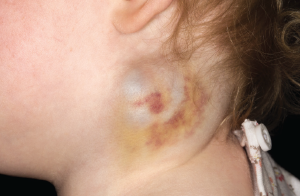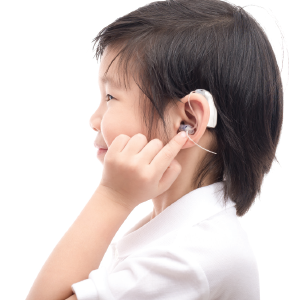SAN DIEGO—Investigators from around the country presented their findings at the 120th Annual Meeting of the Triological Society, held in conjunction with the 2017 Combined Otolaryngology Spring Meetings, held here April 28–29, 2017. Here are some research highlights from the event.
Explore This Issue
July 2017Blood Transfusion in Children with Sickle Cell Disease Undergoing Tonsillectomy

Sickle cells
© Stocktrek Images/Getty Images
In an analysis of the Kids’ Inpatient Database for trends in the use of blood transfusions, researchers found 1,133 pediatric patients with sickle cell disease (SCD) who had undergone tonsillectomy from 1997 through 2012. The patients were split into groups by blood transfusion status and compared across variables including complication rate, length of stay (LOS), and hospital charges.
There was a strong positive correlation between increasing chronologic year and the proportion of patients receiving blood transfusions, 47 (30.1%) in 1997 to 78 (42.5%) in 2012. During this period, there was no significant change in the rate of complications. Overall, patients receiving blood transfusion had a longer mean LOS (3.1±2.4 days vs. 2.5±2.2 days) and higher mean charge ($17,318±$13,191 vs. $13,532±$12,124) when compared with patients who did not receive blood transfusion.
The rate of complications in the transfusion group, 18 of 352 (5.1%), was not significantly different from the group without transfusion, 40 of 626 (6.4%).
The investigators concluded that there was a significant increase in the proportion of patients with SCD receiving perioperative blood transfusions for tonsillectomy. While the frequency of transfusion rose, those who received a transfusion had similar complication rates with increased charges and length of hospital stays compared with those who did not receive a transfusion.
Management Trends for Lymphatic Malformations in the U.S. (1997–2012)

Cystic hygroma.
© Dr. P. Marazzi / Science Source
In a review of the Kids’ Inpatients Database (KID) from 1997 through 2012, investigators found that the most commonly performed procedures for the treatment of lymphatic malformations (LMs) in pediatric patients were surgical excision, airway endoscopy, tongue procedures, salivary gland procedures, and sclerotherapy. The researchers tracked the frequency of each procedure group across each edition of the KID and compared complication rates between groups.
A total of 9,575 admissions included the diagnosis of LM. From 1997 to 2012, there was a significant overall change in management of patients with LM. This was primarily attributed to a significant decrease in surgical excisions, with 507 (30.4%) patients undergoing surgery in 1997 and only 193 (13.5%) in 2012. Simultaneously, there was a significant increase in the number of sclerotherapy procedures performed, rising from 19 (1.1%) to 117 (8.2%) patients. Patients undergoing sclerotherapy were roughly half as likely to experience a complication during admission compared with those undergoing surgical excision.
The researchers concluded that lymphatic malformation management has undergone a significant shift over the past 15 years. While surgical excision of the malformation was the predominant treatment in 1997, a gradual shift has occurred toward sclerotherapy, which has a lower complication rate.
Linguistic and Behavioral Outcomes in Bilingual Children with Hearing Loss

© ANURAK PONGPATIMET / SHUTTERSTOCK.COM
In a prospective, cross-sectional study of children aged 6 to 17 years with permanent, non-profound hearing loss (HL), investigators recruited participants from a pediatric otolaryngology and audiology practice. Typically hearing (TH) siblings and patients from general pediatrics clinic were controls. All children were raised in households where the primary language was not English. English language proficiency was assessed by a licensed speech language pathologist using the Oral and Written Language Scales (OWLS-II); behavioral problems were assessed with the validated Child Behavior Checklist (CBCL); and native language proficiency was assessed with the SOLOM (Student Oral Language Observation Matrix).
The researchers found that age, sex, socioeconomic status, and years of English exposure were comparable between the HL (n=32) and TH (n=15) groups. Oral expression and listening comprehension were both worse in the HL cohort; children with unilateral HL performed significantly better than those with bilateral HL. HL children scored worse in native language proficiency than their TH counterparts. HL children had a higher incidence of clinically significant problem scores in social and school domains, with 25% of HL children having clinically significant behavioral problems.
The researchers concluded that children raised in a non-English speaking household are at particular risk for language delay in both English and their native language, as well as behavioral challenges, compared to their typically hearing peers. These disparities in speech, language, and behavioral outcomes in this at-risk group demonstrate the need for additional investigation and support.